
Sorghum (Sorghum bicolor (L.) Moench)
Local names in Kenya (Mtama, Bel, Mawele)
Overview
Sorghum is the firth most important cereal grown in the world. It is an indigenous crop to Kenya and is a basic staple food crop for many rural communities in the country, especially in more drought-prone areas. It is important for food, animal fodder, bio-fuel and production of alcohol and beverages. The crop is adapted to a wide range of environments, able to perform better than most crops under extreme climatic conditions, from excessive dry spells to excessively moist conditions, and under varied temperatures and soil types
Altitude range
Sorghum requires altitudes of 0-2500 masl and a suitable AEZ e.g. LM1-LM5
Soil type and conditions
A wide range of soils e.g. clay loam, clay and silt soils but not loamy soil with the soil pH of 4.8-6.0
Sorghum nutrient requirements include: N, P, K, Zn, S, Cl, Mg, Ca, Fe, B, Cu, Mn
Temperature range
The temperatures should be above 10 oC
Rainfall
Rainfall should be 250-900 mm p.a
Steps during land preparation
- Plough a fallow land, if planted as second season crop one plough is sufficient
- Practice contour farming technique
- Add manure and fertilizers to the soil in the right amounts to provide the required plant nutrients for vigorous crop growth
- Maintain adequate soil health, soil nutrients, soil depth and moisture holding capacity
- Soil testing and analysis is necessary for tailored soil amendments and nutrient replenishment
Seeds


Vegetative stage
Reproductive stage
Recommended varieties include;
Gadam, Serena and Seredo
Use certified and local varieties as per the AEZ
Direct planting of seeds is done by sowing directly into furrows as a drill at a spacing of 45 x 60 or 75cm x 20cm for mono-crop and 90 cm x 30 cm for inter-crop with legume or maize
Drill then thin to 12-20 cm between plants in furrows, 3-4 weeks after emergence
In dry condition seeds should be placed at 5 cm depth and 2.5-4.0 cm in moist soil
Seed rate; 7-12 Kg per Ha and the seed rate vary depending on environmental condition. Very low seed rate is applicable in very dry conditions
Traditional planting broadcasting can also be applied
Rainfall can supply most of the water requirements for sorghum
Irrigation is done only when necessary to maintain optimal soil moisture
Striga weed


Rotate crops to break weed cycle, and to avoid weed build-up
First weeding is done after 2-3 weeks after emergence
Second weeding 2-3 weeks after the first weeding to reduce competition for nutrients and to control pests and diseases
Rogue diseased, off types and infected plants to reduce host plants for vectors
Ratoon crop stalks are cut and arranged between rows to act as mulch to smoother weeds and retain moisture in the soil
Recycle crop and plant residues to provide manure when they decompose
Apply sufficient, well-decomposed, organic manure in soil before planting to enhance water holding capacity, texture and to supply nutrients for healthy crop establishment
Thinning is done after emergence for correct plant population avoid unnecessary competition
Mulching is done to smoother weeds
Rogueing of diseased plants should be done at the correct time
Intercrop should be done with an appropriate cover crop
Control soil erosion or run off
Practice crop rotation
Pests include;
Birds especially quelea, Sorghum shoot fly, Stem borers, Sorghum midge, Head bugs, Termites, Chafer grubs, Weevils, Striga weed; Fall armyworm
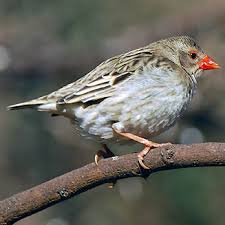
Quelea

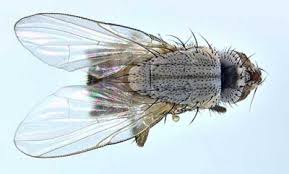
Sorghum shoot fly


Stem borers

Sorghum midge
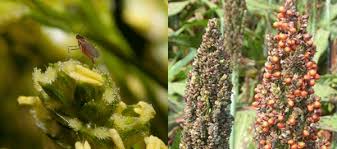


Head bugs
Termites


Fall armyworm
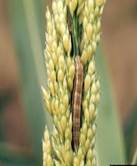

Control of pests strategies
Control using early uniform planting
Field sanitation and crop rotation to break pest cycle and to avoid pest build-up
Spray with insecticides
Plant early maturing and tolerant varieties
IPM and cover grain heads with sugar bags
Scare crow
Major diseases include;
Leaf blight, Anthracnose, Sooty stripes, Rusts, Smut, Charcoal rot and Grain mold
Leaf blight

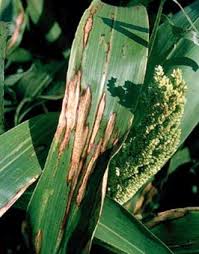
Anthracnose


Rusts

Diseases control strategies
Use tolerant or resistant varieties
Crop rotation to break disease cycle, and to avoid disease build-up
Clean seeds or certified seeds
Field sanitation and hygiene
Early planting
Sorghum is harvested when physiologically mature, i.e. when most leaves have dried, the panicles are no longer green, the stalks turn yellow or brown
Harvesting is done manually by cutting the head using a sharp knife
The harvested sorghum is then carefully transported to the homestead avoiding contamination
Sorghum has the potential of producing 2.7 tons per ha
Check the moisture content of the dry grain using a moisture meter or salt method. Salt will stick on grain which is not adequately dried when the grain is put in a container of salt and shaken
Store the dry grain in airtight bags or metallic silos
Dry the harvested sorghum panicles on mats air tarpaulins
Drying prevents contamination of the grain with mycotoxins
Thresh the dry sorghum panicles
Dry the threshed grain to a moisture content of 13% or less
Winnow to remove chuff
